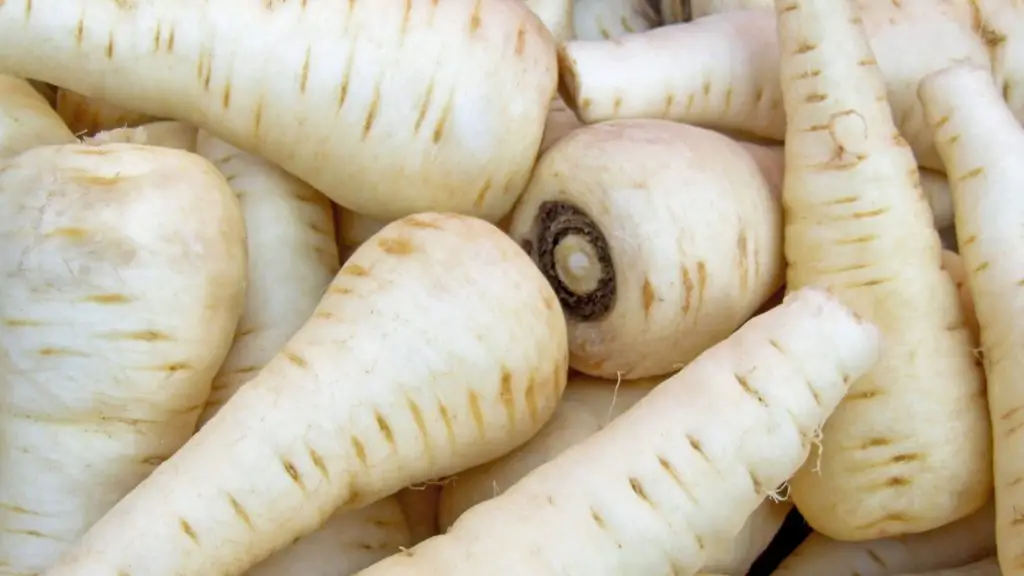
In Asia, parsnips are grown mainly in Japan, China and Korea. In North America, regions with temperate climates, such as the Pacific Coast, the regions around the Great Lakes, and the Northeast, are best suited for growing parsnips. In Germany, the Netherlands, Belgium and France, they are among the most important root vegetables. In Europe, parsnips are grown mainly in northern and western regions. However, they prefer a cool and humid climate and thrive best in regions with mild winters and rainy summers. Macronutrient distribution: Parsnips are rich in vitamins and minerals, especially vitamin C, vitamin K, folic acid, potassium and iron. Parsnips are cold-tolerant and can be grown in many regions. What regions are best for growing parsnips? Some of the best known and most commonly grown types are common parsnip, white parsnip, yellow parsnip, sweet potato parsnip and Japanese parsnip. There are many different types of parsnips grown in agriculture. What are the different types of parsnips? Frozen parsnips should be used within 6 months. Parsnips can also be frozen to keep them fresh longer. They can be stored in the refrigerator or in a cool cellar. Parsnips should be stored in a cool, dark place to keep them fresh. They have a sweet, nutty flavor and a firm texture. They can be eaten raw or cooked and are suitable for a variety of recipes including soups, casseroles, purees and gratins.

Parsnips have an elongated, thick, nodular shape and can be yellow, white or pink. They are native to Europe and Asia and are harvested mainly in the fall and winter. Parsnips, also known as turnip roots, are a root vegetable and belong to the umbelliferae family.

🍤 - this food contains shellfish, a common food allergen. Improves Digestive Function and Prevents Constipation. Parsnip roots grow from five to ten inches long on average.

Parsnips are sweet, try using them in place of carrots in carrot cake. Parsnip consumption is a great natural way to boost your vitamin C levels, since its high vitamin C content is a staple of parsnip nutrition. Parsnips (Pastinaca sativa) look like colorless carrots, but they have their own complex, sweet and spicy, earthy flavor.They are a cool-season root vegetable and are technically a biennial (completing their life cycle in two growing seasons) but they usually grown as an annual. 🐠 - this food contains fish, a common food allergen. Parsnips are great in spicy dishes like curries or spicy parsnip and cauliflower soup. 100g of Parsnip covers 4 of the daily calorie requirement. These calories come from 18g carb and 1.2g protein. Therefore, this vegetable provides 13.1 g of net carbs per 100g. 🌰 - this food contains tree nuts, a common food allergen. Parsnip contains 18g of carbs, 4.9g of which is fiber. 💮 - this food contains sesame seed, a common food allergen. ✳️ - this food contains soy, a common food allergen. 🌾 - this food contains wheat, a common food allergen. According to the Canadian Nutrient File and Health Canada’s recommended daily intake for vitamins and nutrients, 100 g of raw parsnips contain only 75 calories but pack 14 of your daily fibre, 30 of folate, 12 of magnesium, 11 of potassium, and 4 of iron. 🐄 - this food contains cow's milk, a common food allergen. 🍳 - this food contains egg, a common food allergen. 🥜 - this food contains peanuts, a common food allergen. 💩 - this is a food that helps prevent or treat constipation. 🌱 - this food is a great choice for plant-based babies. 🥇 - this food is a great choice for baby's first food. You should include a fruit and/or a vegetable at each meal.

You should include an iron-rich food at each meal. You should include a high-calorie food at each meal.


 0 kommentar(er)
0 kommentar(er)
